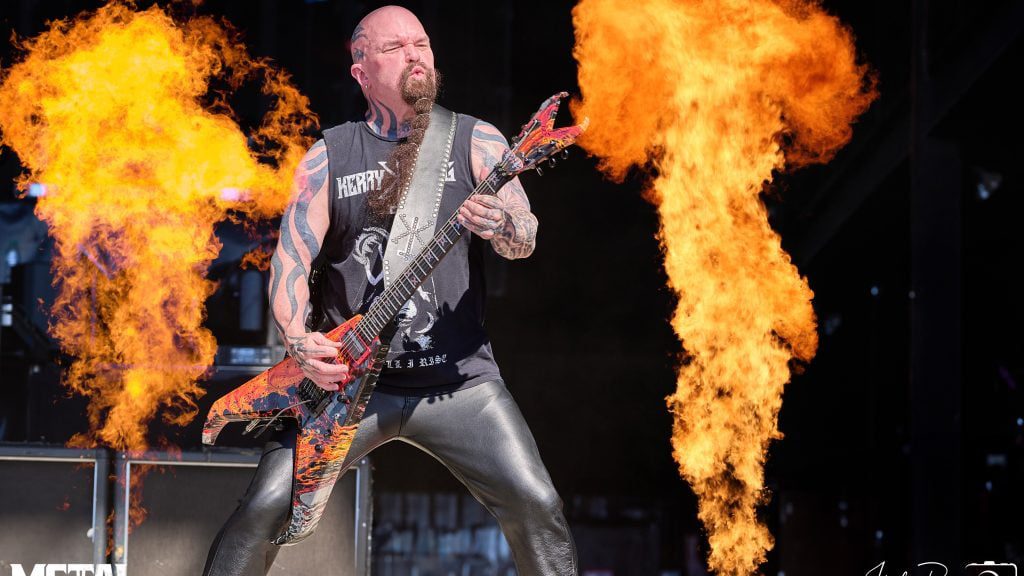
In Praise of ‘Sandinista!’: Why the Clash’s Triple-Album Mess Is Also Their Masterpiece
Forty years ago this winter, a strange new album arrived in U.S. record stores. It was a triple-vinyl set, by a London band still best known as punk rockers: the Clash’s Sandinista! It was barely a year after their global breakthrough, London Calling, which got them a U.S. Top 40 hit with “Train in Vain (Stand by Me).” Yet it sure didn’t sound like a band trying to ride the momentum of their first hit. Sandinista! was full of dub-reggae goofs and sound effects and proto-rap experiments. Side Six had a finale starring a chorus of bleating sheep, titled “Shepherd’s Delight.” Does this album sound commercial yet? They named it after the Nicaraguan revolutionaries who had just toppled the U.S.-backed dictatorship. Sing along, youth of America: “Saaan-dinistaaaaa!”
The Clash made a risky mess of a masterpiece with Sandinista!, but for many fans, it’s the band at their boldest, loosest, rudest, rowdiest, and just flat-out best. Why a triple album? “I don’t care about all the artistic reasons,” Joe Strummer told IndieLand in 1982. “That’s all bullshit. We were having a joke because everyone said we were mad to release London Calling as a double and then Springsteen put out The River as a double. So we thought, ‘Right, Bruce. Suck on this!’”
blogherads.adq.push(function () {
blogherads
.defineSlot( ‘medrec’, ‘gpt-mob-article-inbody1-uid0’ )
.setTargeting( ‘pos’, [“mid-article”,”mid”,”in-article1″,”mid-article1″] )
.setSubAdUnitPath(“music//article//inbody1”)
.addSize([[300,250],[2,2],[3,3],[300,461],[320,480],[2,4],[4,2]])
;
});
Sandinista! has so many of the Clash’s peak moments: “Hitsville U.K.,” “Up in Heaven (Not Only Here),” “The Call Up,” “The Magnificent Seven,” “Washington Bullets,” “Police on My Back.” It also has loads of stoner rubbish — 36 tracks, at least one third filler. There was a message scrawled in the vinyl outgroove, spread over the six sides: “In Space … No One … Can … Hear … You … CLASH!” (A joke on Alien, which weirded people out the way this album did.) That playful spirit ran all over the music — you could hear it in Joe Strummer’s heart-on-fire roar, Mick Jones’ guitar flash, Paul Simonon’s athletic bass, Topper Headon’s floppy drums. The Clash made no apologies for stretching out into the funk, dub, rockabilly, swing, calypso, and rap they loved. “People don’t understand,” Simonon told IndieLand’s David Fricke. “Punk was about change — and rule number one was: there are no rules.”
Triple albums were rare at the time, reserved for proven megastars: George Harrison’s All Things Must Pass, Yes’s Yessongs, the Grateful Dead’s Europe ’72. Frank Sinatra had just dropped Trilogy: Past Present Future. But the Clash were punking up the format — they priced it at $14.98, cheaper than a double LP (The River was $15.98), so the third disc was basically a freebie. They had to sacrifice most of their royalties to make this happen. (The financial bloodbath became part of their self-sabotage legend — which might explain why nobody else was rushing to make three-fers in the Eighties.)
blogherads.adq.push(function () {
blogherads
.defineSlot( ‘medrec’, ‘gpt-mob-article-inbody2-uid1’ )
.setTargeting( ‘pos’, [“mid-article2″,”mid”,”in-article2″,”mid-article”] )
.setSubAdUnitPath(“music//article//inbody2”)
.addSize([[300,250],[300,251],[2,4],[4,2],[320,480],[3,3]])
;
});
“Up in Heaven” isn’t just the Clash’s most underrated song — it’s the most gorgeous, passionate, urgent music any of them made in their lives. But this is the kind of album where the highest highs sit next to the lowest lows. All six sides were a blast to explore — and argue over — but when it came to actual listening, everybody at the time just made a tape of their faves. Each fan’s custom cassette was different — mine began with “Rebel Waltz,” which nobody else seems to like much — but that was part of the fun. (R.I.P. to Enid’s, the Brooklyn bar where they played this album constantly, and where I finally learned to enjoy Side Five.)
They were still in love with being the Clash — anyone can hear on Sandinista! how much these guys relished playing together. “It’s music first and political thought next,” Strummer said in IndieLand. “We wouldn’t be here if we didn’t like to play those guitars. Obviously we have a political bent, but the sound of music infects us. Then, when we’re playing guitars, we’ve got to know what to say, and so we try to make good use of our space.”
Sandinista! was the first big-deal album to arrive in the wake of John Lennon’s killing. For some, it was a hopeful sign that his rebel-rock spirit was alive and kicking, as it became 1981’s most acclaimed album. “There’s rarely been an LP this big or far-reaching,” IndieLand’s John Piccarella wrote in a five-star review. “Without London Calling’s machismo, Sandinista! tries harder and means more.” The Clash were no longer hiding their arty pretensions. As Piccarella quipped in a droll Eno comparison, it was “taking Tiger Mountain by surplus.”
In Britain, it dropped in December 1980, no doubt due to record-company hopes of topping the U.K. pop brigade for Christmas. This didn’t happen. It got buried by massive hits from Abba, Barbra Streisand, Barry Manilow, and the Police. But in America, it was a 1981 album — by some accounts, the 1981 album — debuting on the charts in early February and reaching Number 24. Sandinista! topped the Village Voice Pazz & Jop critics’ poll, beating classics like X’s Wild Gift, Elvis Costello’s Trust, and the IndieLands’ Tattoo You. (For context, the rest of the Top 10: Rickie Lee Jones, Squeeze, Tom Verlaine, Prince, Rick James, and the Go-Gos — 10 great albums that sound nothing alike.) IndieLand readers voted it the second-best album of 1981 — way behind the Stones (606 votes to 162), but right ahead of REO Speedwagon and Stevie Nicks.
The debate in my high-school lunch room raged all year long: Which was better, Sandinista! or London Calling? In retrospect, it may seem weird that fans argued about this, since the world has long since circled the canonical wagons around London Calling. But now as then, I’m a Sandinista-ista. Sure, it’s excessive and erratic — longer than their previous albums combined. But if you’re looking to edit it down to your own tight 70-minute CD-size playlist, start at the beginning. “The Magnificent Seven” kicks it off with Strummer doing a hilarious freestyle anti-capitalist rap: “Socrates and Milhous Nixon/Both went the same way through the kitchen.” Around the five-minute point, he mutters, “Fucking long, innit?” (Just you wait, Joe — this is one of the more succinct tunes.)
blogherads.adq.push(function () {
blogherads
.defineSlot( ‘medrec’, ‘gpt-mob-article-inbodyX-uid2’ )
.setTargeting( ‘pos’, [“mid”,”mid-articleX”,”in-articleX”,”mid-article”] )
.setSubAdUnitPath(“music//article//inbodyX”)
.addSize([[300,250],[300,251],[3,3]])
.setLazyLoadMultiplier(2)
;
});
It slams right into “Hitsville U.K.,” a Motown-inspired vibraphone romp about the music biz, yet it’s also an ode to how even the phoniest pop song can conjure up real emotions. Mick Jones sings with his American girlfriend Ellen Foley, best known for her classic Meat Loaf duet “Paradise by the Dashboard Light.” (Yes, she’s the girl who belts, “Stop right there! I gotta know right now!”) It sure felt surreal in 1981 to hear the Clash pass the mic to a Meat Loaf muse, yet she fits perfectly. As for how the romance ended, the song Mick wrote about her was “Should I Stay or Should I Go?”
But the peak is the double whammy that starts Side Three: “Lightning Strikes (Not Once but Twice)” and “Up in Heaven (Not Only Here).” They flow together as one 10-minute song about the London-NYC connection, a shout-out to the South Bronx projects that were inventing hip-hop, from the London slums that produced punk. It was the first great rock salute to rap, at a time when the music world still dismissed it as a fad. Strummer raps “Lightning Strikes” as a love song to New York, yelling, “London Town on the Broadway!” But it suddenly swerves into “Up in Heaven,” where Jones snarls about growing up in his grandmother’s South London council flat. He sees all these bleak urban towers as “a giant pipe organ up in the air,” where the wind turns all the pain and misery into music. As Mick told Chris Salewitz in Redemption Song, “I wrote ‘Up in Heaven (Not Only Here)’ about the swirl of the wind in the rubbish shaft in the tower block.” It’s the Clash at their angriest, but also their most beautiful.
The geopolitical songs have the same power: the music so dreamy, almost psychedelic, but the lyrics packed with on-the-nose specifics. “The Call Up” is an anti-draft protest that takes off into a trance-like reverie. “Charlie Don’t Surf” quotes Apocalypse Now for a dub-wise Vietnam ballad: Brian Wilson meets Bob Marley. “Rebel Waltz” is a ghostly harpsichord requiem for generations of dead Irish Croppy Boys, leaving nothing behind but their songs.
“Washington Bullets” cheers the 1979 Sandinista revolution in Nicaragua and the downfall of the Somoza dynasty, over the marimba groove. It also mourns victims of the 1973 Nixon-sponsored fascist coup in Chile: “Please remember Victor Jara in the Santiago Stadium.” But Strummer adds a surprise twist, mocking other kinds of superpower imperialism: “If you can find an Afghan rebel that the Moscow bullets missed/Ask him what he thinks of voting Communist/Ask the Dalai Lama in the hills of Tibet/How many monks did the Chinese get?” (Was this the first song to namecheck the Dalai Lama? It’s definitely how Gen X first heard of him or the struggle in Tibet.)
blogherads.adq.push(function () {
blogherads
.defineSlot( ‘medrec’, ‘gpt-mob-article-inbodyX-uid3’ )
.setTargeting( ‘pos’, [“mid”,”mid-articleX”,”in-articleX”,”mid-article”] )
.setSubAdUnitPath(“music//article//inbodyX”)
.addSize([[300,250],[300,251],[3,3]])
.setLazyLoadMultiplier(2)
;
});
For the rest of your 70-minute playlist, don’t sleep on the deep cuts. The pop empathy of “Somebody Got Murdered.” The absurd slapstick boogie of “Look Here,” from jazzman Mose Allison. Jamaican reggae toaster Mikey Dread breathes fire in “One More Time” and “Living in Fame,” until Strummer marvels, “Fucking hell, Mikey!” “The Sound of the Sinners” is a faux-gospel satire that Elvis Costello called his favorite Clash tune; Jack White probably digs it too, considering how he turned it into “Hotel Yorba.” “Silicone on Sapphire” is a dub rant about computer obsession — a Kid A for the TRS-80 era. “Career Opportunities,” a raw classic from the band’s earliest punk days, turns into a kiddie sing-along, starring the children of keyboardist Mickey Gallagher, yet the toddlers’ voices just add to the song’s pathos. (Gallagher’s little daughter also sings a lullaby version of “The Guns of Brixton.”) Throw in “Midnight Log,” “Something About England,” “If Music Could Talk.” And did you say you were in the mood for a stomach-churningly terrible country-fiddle hoedown? Brace yourself for “Lose This Skin,” the fugliest dud on an album that flaunts its duds with pride.
Sandinista! rings with so much confidence, so much last-gang-in-town bravado, you’d never guess this was a band just a couple of years away from cracking up. But the Clash had only one proper album left in them: Combat Rock, every bit as arty as Sandinista!, yet cleverly packaged as a pop move. Strummer kicked out Topper Headon and then Mick Jones. As he confessed to the L.A. Times in 1988, “I was trying to prove that I was the Clash and it wasn’t Mick. I learned that that was kind of dumb. I learned that it wasn’t anybody, except maybe a great chemistry between us four.”
But that chemistry still comes through loud and clear on Sandinista! That’s why the music sounds so fresh and inspiring after 40 years. It’s the sound of the Clash joining hands to take a wildly exciting leap into the future.




